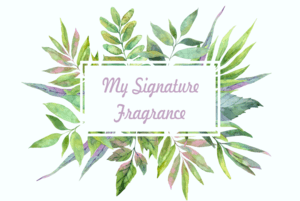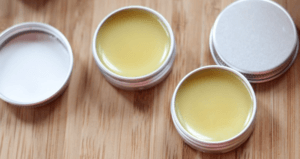Create Natural Perfumes Using Essential Oils
Essential oil perfume is a 100% natural, toxin-free and more affordable alternative to those expensive designer perfumes. That’s one of the many reasons why we love to create natural perfumes!
In our Certified Essential Oil Practitioner course we dive much deeper into blending methods for perfumery as well as therapeutic use. Today though, I'll teach you how to select your essential oils for your signature perfumes and even give you recipes!
Simply select your favorite essential oils, follow the principles of essential oil blending (more on that below), and you can create your own unique signature fragrance, which will soothe your body, mind and soul.
These homemade perfumes are free from those nasty chemicals usually found in regular perfumes. This includes phthalates, parabens and preservatives which can cause skin irritations, allergies and even disrupt your hormones.
You can also control exactly what you put into these perfumes and blend them to be exactly as you want!
So, we’ve gathered together everything you need to know to get started with essential oil perfumes. Keep reading to find out more about using essential oils to create perfumes.
You’ll learn the pro tricks that will help you create a well-balanced fragrance and learn three easy recipes that will help you make perfume from scratch even if you’re a complete beginner. We’ll also share our favorite essential oil blends to help you get started right now. Enjoy!
A very brief history of essential oil use in perfumes
Creating perfumes from essential oils is nothing new.
There’s evidence that cultures across the world have been using essential oils to make perfumes for thousands of years.
The best known of these is probably the Egyptians, but it also includes the ancient Greeks, Romans, Chinese, Arabs and Hindus. Egyptians first used the glass perfume bottle around 3000 years ago, and there are even mentions of essential oils like frankincense and myrrh in the Bible!
Over the years since then, perfume use spread across the entire world. While originally used by the rich or upper class, the regular use of perfumes has spread to all parts of society over the past 200 years.
Although original perfumers and fragrance makers used essential oils, these days many just use synthetic fragrance to save money. Unfortunately, this increases the chance of skin irritation and removes the potential benefits of using essential oils in perfumes.
That’s why so many people are going back to the healthier, natural perfume options.
How to make your own perfume blend using essential oils
Absolutely anyone can create their own 100% natural perfume and it’s very easy to do. You simply need a selection of high-quality essential oils, a carrier oil or similar liquid and something to store it in.
The secret to creating a high-quality, memorable fragrance is to use the same principles as the pros do: use a careful balance of base, medium and top notes to create a balanced and harmonious fragrance.
Below I'll explain more about perfume and how this works.

Top notes
This is lightest of all the fragrances and is what you notice first when you smell a perfume. It’s also the first to fade. Top notes include:
Lemon
Lemongrass
Lemon Myrtle
Sweet Orange
Tangerine
Lime
Bergamot
Grapefruit
Clary sage
Lavender
Eucalyptus
Rosemary
Thyme
Camphor
Wild Marjoram
Citronella
Coriander Seed
Allspice
Bay
Cassia
Cinnamon
Clove
Cardamom
Nutmeg
Myrtle
Tea Tree
Cypress
Pine
Juniper Berry
Middle notes
The next that you notice will be the middle note. It’s the heart of the fragrance, it lasts longer, and it tends to be well-rounded and smooth. These include:
Geranium
Rose Absolut
Rose Otto
Ylang ylang
Lavender
Coriander
Nutmeg
Neroli
Jasmine
Sweet Marjoram
Chamomile
Sage
Clary Sage
Hyssop,
Mandarin
Neroli
Anise Seed
Fennel Seed
Peru Balsam
Base notes
The base notes are those that hang around the longest and create the body of your perfume. These include:
Cedarwood
Sandalwood
Vanilla
Amber
Patchouli
Oakmoss
Musk
Frankincense
Myrrh
Carrot Seed
Vetiver
Ginger
Blue Cypress
When we create our own natural perfumes, we need to select one or more from each of these ‘notes’ to help it become balanced, well-rounded and appealing.
Of course, this can take practice and experience to get exactly right. That’s why we’ve included a quick selection of our nine favorite essential oil blends for perfume below. Check it out!

Our favorite essential oil blends for making natural perfumes
Here are some of our best-loved, tried-and-tested essential oil blends for perfume-making. Why not give one of them a try?
- Floral Heaven: 5 drops sweet orange, 2 drops lime, 2 drops jasmine, 2 drops vanilla
- Citrus: 5 drops lemon, 3 drops rosemary, 2 drops neroli
- Earthy: 3 drops patchouli, 3 drops palmarosa, 1 drop vetiver, 4 drops cedarwood, 1 drop neroli
- Spicy: 5 drops bergamot, 1 drop clove, 4 drops sandalwood, 2 drops vanilla
- Summer Breeze: 7 drops bergamot, 3 drops grapefruit, 4 drops geranium, 2 drops cedarwood
- Indian Spring: 7 drops lemongrass, 4 drops lavender, 6 drops sandalwood
- Asian Floral: 5 drops orange, 5 drops lavender, 5 drops geranium, 2 drops ylang ylang
- Vanilla Dream: 5 drops sweet orange, 10 drops vanilla, 1 drop cinnamon, 1 drop clove
- The Great Outdoors: 4 drops cypress, 2 drops white fir, 1 drop sandalwood
Now you know the secret to blending essential oils like a pro and you have a selection of fragrance blends, we can start creating!
3 easy essential oil perfume recipes

There are three types of natural perfume you can make in the comfort of your own home which will make you smell fantastic and allow you to enjoy the therapeutic benefits of using essential oils.
These are:
- Simple roll-on perfumes
- Solid perfumes
- Spray perfumes
How to make a roll-on / roller ball perfume
- Find a 10 ml roller ball perfume bottle. Make sure it’s made of dark glass- blue or amber is best.
- Pour a carrier oil such as sweet almond oil, jojoba oil, grapeseed oil or fractionated coconut oil into the bottle until it’s around ¾ full.
- Carefully add your essential oils, starting with the base notes, then the middle notes and finally the top notes.
- Cover the top and gently swirl the oils until combined.
- Top with extra carrier oil if required then cover with the roller ball lid.
- Store in a cool, dark place away from direct sunlight.
- Apply to your wrists, behind your ears or wherever else you fancy wearing it!
How to make a solid perfume
- Find a small jar or lip balm container and make sure it’s clean and dry.
- Place a heatproof bowl over a pan of boiling water and add 4 tablespoons beeswax.
- Heat until melted.
- Next add 4 tablespoons of jojoba oil and stir through. Leave to cool until it’s below 120 degrees.
- Add your essential oils, starting with the base notes, then the middle notes, then the top notes. Notice that you’ll need to use more than for the roll-on perfume. We suggest you triple the quantities we suggested in our essential oil blends.
- Store in a cool, dark place away from direct sunlight.
- Stir well to combine then store in the jar or lip balm container.
How to make a spray perfume
- Find a glass storage container with a spray cap. Opt for dark blue or amber.
- Pour witch hazel or alcohol into the bottom of the container until it’s approximately
¾ full. - Carefully add your essential oils, starting with the base notes, then the middle notes and finally the top notes.
- Cover the top and gently shake until the oils have mixed in.
- Top with extra witch hazel or alcohol then cover with the lid.
- Store in a cool, dark place away from direct sunlight.
- Use and enjoy!
See? It’s easy when you know how.
Why not practice your skills and create your very own signature essential oil fragrance today using the suggestions we’ve shared here? You’ll smell gorgeous and you’ll feel utterly gorgeous too!
Learn More About Essential Oil Perfumery
When you become a Certified Essential Oil Practitioner, you also learn about blending essential oils for fragrance applications. Discover how to create your own signature perfume and perfumes for others as well, within this course.
Get the course details and find the registration link and tuition options near the bottom of the page at: https://essentialoilacademy.com
Get Certified!
Become a Certified Essential Oil Practitioner and learn how to help your loved ones and clients live happier, healthier lives with essential oils. This professional certification will allow you to work part or full time and charge for your consultations. Click HERE for details: https://essentialoilacademy.com
Have an idea for an Essential Oil Academy blog post topic?
Please email us at info@essentialoilacademy.com with your idea. We want to write about topics that are both interesting and important to you!
© 2019 Essential Oil Academy.. All Rights Reserved.
DID YOU KNOW ...

Seats are Limited so don't wait ... register today and guarantee your seat! Get all the details HERE.

